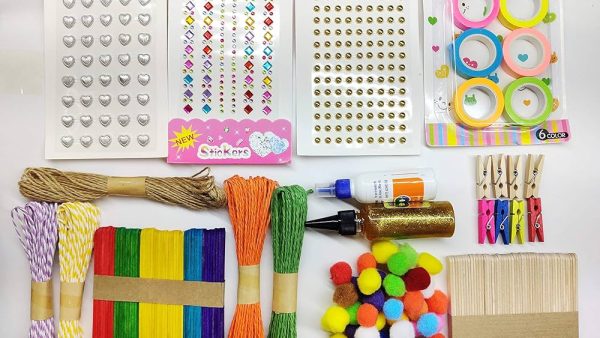Due to the natural wear and tear of furniture, you might need to refinish or repaint your wood or metal furniture. You can give your pieces a new life before letting them go. This article gives you general tips and a guide for refinishing and painting furniture.
Signs it is Time to Refinish or Repaint your Furniture
- The surface has flakes, cracks, or chipping off.
- The surface feels sticky even after cleaning.
- Noticeable heat or water rings on the surface.
- Signs of wear or darker color than the rest of the piece.
Refinishing or Recoating Furniture
This DIY project has been growing in interest over the past years since it is a creative and rewarding project.
To be clear, when we talk about refinishing or recoating furniture, we mean wood furniture only.
The following explains the specific steps you should follow when refinishing wood furniture and general tips and tricks to look out for.
- Step One: Cleaning the Piece
This is the most important step of refinishing or recoating a piece of wood furniture. You should clean the piece to remove any dust or layer of dirt build-up with a heavy-duty cleaning product or dish soap and water. You can use a sponge or a brush to scrub the surface, and a clean towel to dry it afterward.
- Step Two: Removing Old Finish
There are two main ways to remove the old finish off of wood furniture. The first is by sanding the piece with a gradually finer and finer sanding paper, while the second way is using a chemical stripper first then cleaning and finishing with a fine-grit sanding paper. An optional step here would be to fill the grains of your wood, if they are wider or looser grains, with a grain or wood filler to have a smoother surface.
- Step Three: Staining the Wood
There are several options to choose from when it comes to wood stains. Some stains are water-based, others are oil-based, and last, you can find gel-based wood stains. These three options differ in the texture and consistency of the liquid. Also, you can find products that contain a mixture of stain and finish.
Tip: you can get multiple colors and kinds of stain in tester-size containers and try the product on a small area of your piece to decide on the perfect one.
- Step Four: Sealing or Finishing the Wood
The last step of this process is to apply a good coat of a finish or sealing product. This step is necessary for protecting your furniture piece from environmental elements and further damage. You can choose between oil-based finishes, which soak into the wood and do not offer much surface protection, and wipe-on varnish, which can be built up to control the level of sheen desired, as well as polyurethane varnish, which is durable and can protect your surface for years to come.
General Tips for Finishing Wood Furniture
- Work in a place filled with natural light to see the piece clearly in each step, especially when sanding and staining the wood.
- Keep your workplace clean to avoid any dust or hairs clinging to the wood.
- Stir all products thoroughly before using them.
- Test the stain color on a small section of your wood and let it dry to see how it applies.
Painting Furniture
If you are looking to put a new life into an old piece of furniture, you can consider painting either wood or metal furniture. The following are the steps for panting furniture.
- Step One: Sanding
Before painting and piece of furniture, you should first remove the old chipping layer or paint. You can do that by using sandpaper for wood furniture or steel wool and steel brushes for metal pieces. If you can disassemble the piece at this moment then you most probably should, as it gives a better-quality finished product.
- Step Two: Cleaning
Before moving into the next step, you must first clean the chipped paint or wood dust off the furniture piece and the work surface. This is to ensure that no dust or dirt gets stuck to the piece.
- Step Three: Priming
A primer is a paint-like liquid that prepares your surface for the paint that will be applied to it. Before priming the piece, you should cover the work surface or ground with a piece of fabric that you do not need or a heavy-duty plastic cover.
Tip: cover more surface area than you think you might need because paint has a habit of dripping and splattering everywhere.
There are many types of primers specially made for wood or metal furniture. Thus, you should get the most suitable one for you.
- Step Four: Painting
Many types of paint can be used for furniture, such as:
Latex Paint: This paint is good for furniture pieces that do not get a lot of wear, since it does not stand heavy use. Also, it is affordable, already mixed with many colors and finishes, and can be cleaned with soap and water. However, not all types of latex paints are washable.
Chalky Paint: This paint is suitable for achieving a rich matte look. It adheres well to most surfaces, dries fast, and gives a smooth finish. However, it leaves brush strokes, can be easily scratched or marked and is more expensive than other kinds with limited colors.
Acrylic Paint: This paint is best used for small furniture pieces or small accents within the piece. It is easy to apply as an amateur, it is resilient and resistant to stains, and it comes in different rich colors. However, it needs a primer for best results, it is typically sold in small containers, and it needs a long drying or curing time.
Oil Paint: This type of paint is perfect for furniture pieces that are heavily used and need a durable finish. It usually has a self-leveling formula and can be used on most surfaces. However, it has a high level of toxic fumes, it needs a long time to dry between coats, and it is not available everywhere.
Metallic Spray Paint: This type is good for small metallic furniture pieces, usually handles and legs. It comes in different metallic colors either with a shiny or matte finish. However, you might need many cans if you plan to cover a large area, and you will need a primer and a sealing product afterward.
After you choose the paint, you can apply it on the sanded, clean, and primed surface. You can use a paintbrush or a small foam roller to apply the paint. Note that you might need to apply more than one coat for full coverage, and you should sand between coats.
- Step Five: Protecting
Finally, after your paint is dry you should seal it with a water-based protective finish. Make sure to apply the finish with a foam roller for a smoother and bubble-free finish. Usually, you will need to let the furniture piece dry fully for around 72 hours before use.
General Tips for Painting Furniture
- Painting is not suitable for small spaces, so try to do it in open or large areas.
- You could paint a whole piece with sample paint cans.
- You might choose the wrong color, and have to start over, thus you should do a test part or be ready for this outcome.
- Painting a piece might not be cheap, but if you do it right it is worth it.






